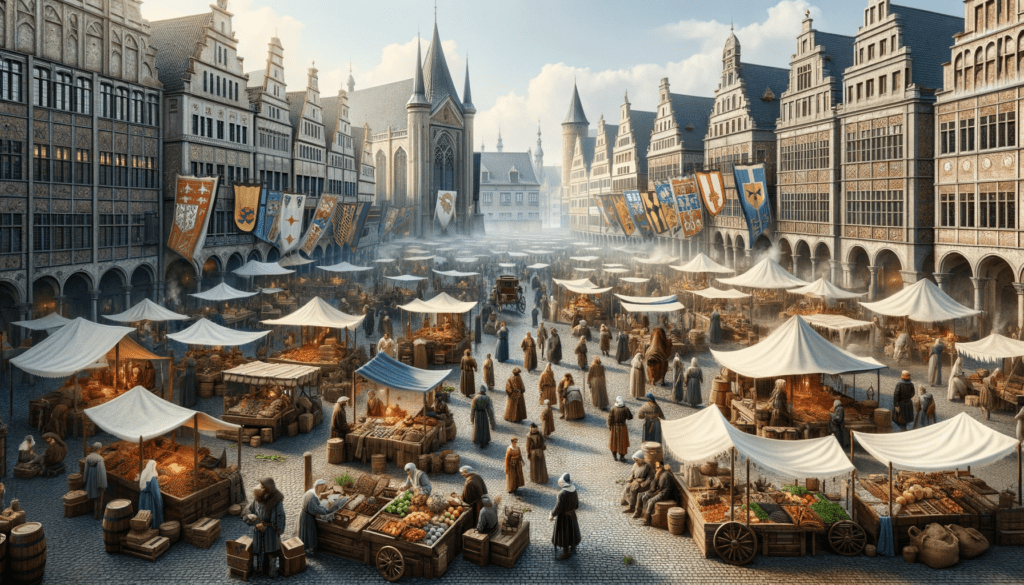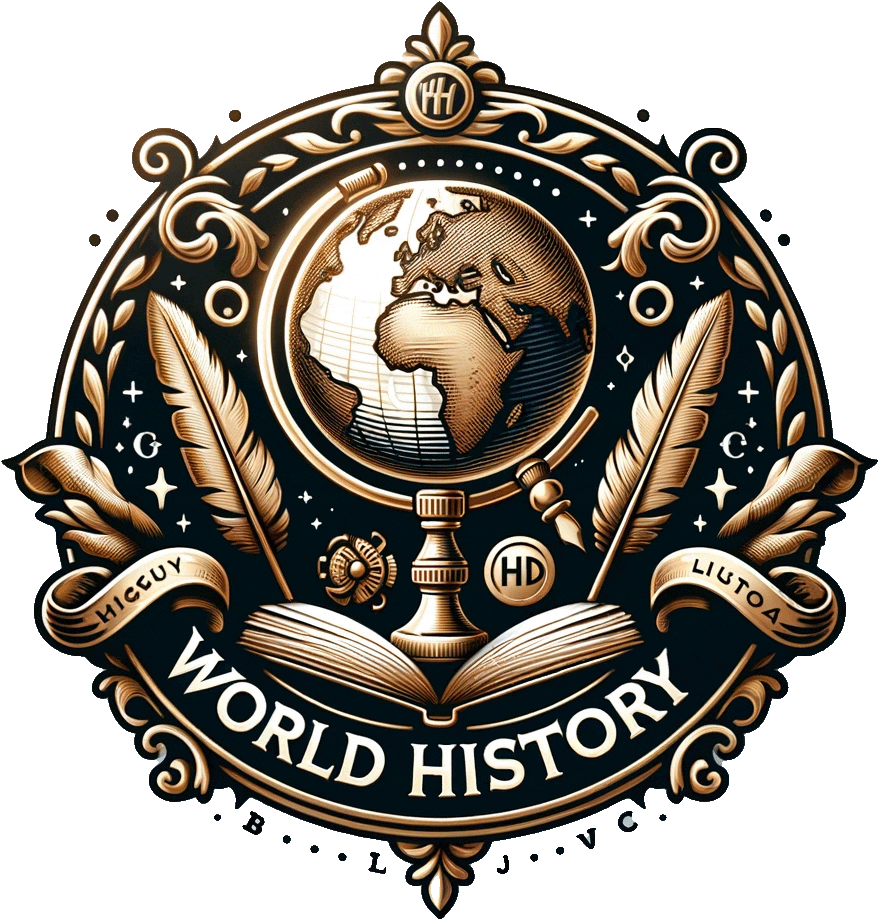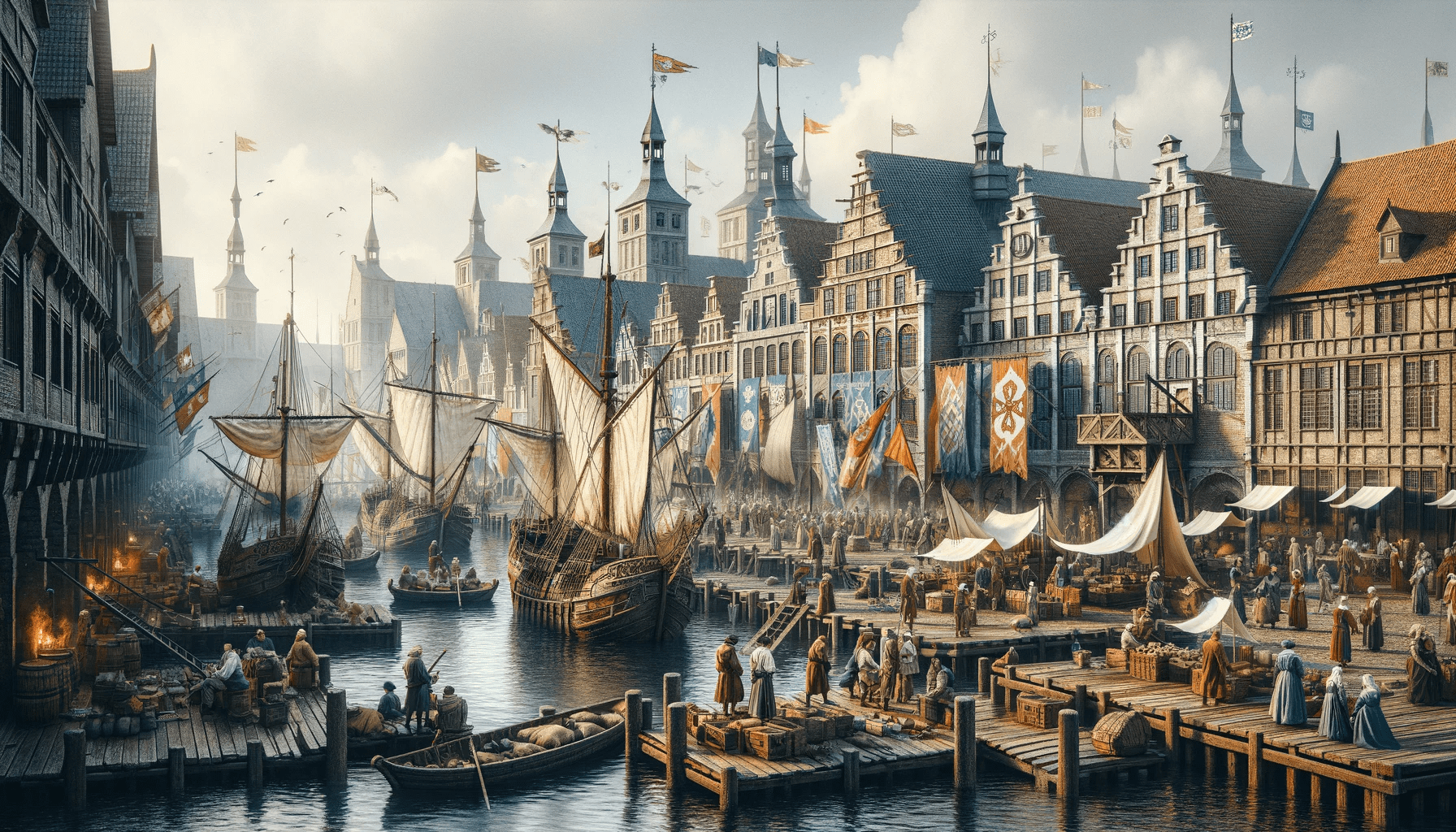The Hanseatic League is known as one of the most influential trade networks of the Middle Ages, which played an important role in the economic, political and cultural development of northern Europe. This blog post dives into the history, workings and legacy of the Hanseatic League, and highlights why it is still relevant today.
History of the Hanseatic League
The Hanseatic League was not a static entity, but a dynamic and evolving network that extended from the 12th to the 17th century. It began with a few northern German cities and grew into an extensive network covering large parts of northern and eastern Europe.
Origin and Development
The origins of the Hanseatic League can be traced to the late 12th century, when groups of merchants from different cities worked together to protect their interests and promote their trade. This cooperation was based on mutual interests and shared norms, which was essential at a time when there was little political stability.
High Days and Expansion
The 14th and 15th centuries were the heyday of the Hanseatic League. The network expanded to countries such as Russia, the Netherlands and even England. Hanseatic cities were recognizable by their wealth and architecture, testifying to the prosperity that trade brought.
Operation of the Hanseatic League
The Hanseatic League was unique in its organizational structure and methods. Instead of a centrally run organization, it functioned as a loose network of cities and merchants.
Trade practices and routes
Hanseatic merchants were involved in the trade of a variety of goods, including timber, salt, grain, and fabrics. They used sophisticated trade routes by sea and land, which helped them expand their trading empire.
Political and Economic Influence
The Hanseatic League had considerable political influence. They were able to negotiate trade privileges and played a role in the political landscape of Europe. Economically, they contributed to the development of cities and the flourishing of local economies.
Legacy of the Hanseatic League
The influence of the Hanseatic League is still felt today. Their contribution to European trade and urban development has left lasting marks.
Cultural and Architectural Heritage
Many Hanseatic cities can still be recognized for their unique architecture and cultural traditions, which originated during the Hanseatic League’s heyday.
Lessons for Contemporary Commerce
The principles of cooperation and mutual benefit, so characteristic of the Hanseatic League, are still relevant today. They offer valuable lessons for contemporary economic and trade relations.
Conclusion
The Hanseatic League was more than just a trade network; it was a force that helped shape the course of European history. Although the physical network no longer exists, the spirit lives on in the modern world.



Leave a Reply